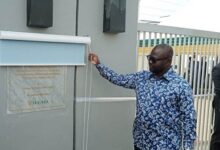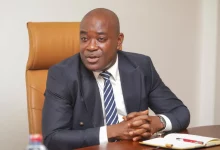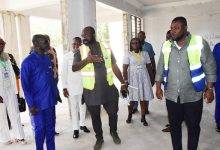The United Nations Children’s Fund (UNICEF) estimates that, four billion people, almost two thirds of the world’s population experience severe water scarcity for at least one month each year.
It says over two billion people live in countries where water supply is inadequate and half of the world’s population could be living in areas facing water scarcity by as early as 2025.
It further says that some 700 million people could be displaced by intense water scarcity by 2030 and by 2040, roughly one in four children worldwide will be living in areas of extremely high water stress.
This is an extremely gloomy picture being painted by the UN body but it appears the world is not paying attention and many are taking for granted the water resources that are available for use around the world.
Otherwise, how is it that countries around the world are looking on while water resources are destroyed with reckless abundance?
For instance, in Ghana, many have expressed concern about the destruction and pollution of water bodies through the activities of illegal mining, but the practice persist and there appears to be no end.
Rather, such activities have gone from bad to worse and extended to our neighbouring countries, especially Cote d’Ivoire who is beginning to get worried over the menace. And in order to resolve it, Ghanaian officials and their Ivorian counterparts met in Accra, on Tuesday, to discuss issues bothering the transboundary water systems of the two countries.
The Minister of Sanitation and Water Resources, Cecilia Abena Dapaah, who received the delegation led by the Minister for Water and Forestry of Cote d’Ivoire, Laurent Tchagba, said Ghana was eager to strengthen ties with its neighbouring countries to protect water bodies in the two countries.
According to her, mismanagement of water resources could result in pollution which negatively impacts human and aquatic lives, irrigation and industry.
She emphasised that without close collaboration with Ghana’s neighbouring countries over protection of water bodies, achieving a common goal of preserving water bodies would be difficult.
The Minister identified the Tano River, as a transboundary river split between Cote d’Ivoire and Ghana; seven and nine per cent respectively and also River Bia which was about 69 per cent and 31 per cent in Ghana and Cote d’Ivoire respectively.
Explaining, the minister stated that, the Bia River in Cote d’Ivoire had two hydroelectric dams which supplied power to Abidjan.
Unfortunately, the two river bodies in Ghana continue to be under threat due to activities of illegal small scale miners but the Minister of Lands and Natural Resources, Mr Samuel Abu Jinapor, who was present at the meeting, stated that the government would not relent in efforts to ensure the illegal practice, popularly known as galamsey was stopped.
“We have waged a relentless battle against illegal mining and we will not stop until all activities destroying our lands and water bodies are brought to a permanent end,” he stressed.
It is reassuring that the two ministers who are directly in charge of the environment and water bodies firmly assure that the country would not relent on its efforts in protecting the water bodies
The Ghanaian Times wishes to remind the entire country of UNICEF’s warning about the dangers ahead and hope that the two nations do not ignore the warning and the threats posed to water bodies of the two countries.
Doing so, however, would mean destroying the future of the two countries. It is, therefore our hope that the meeting would lead to the protection of water bodies in the two countries.





